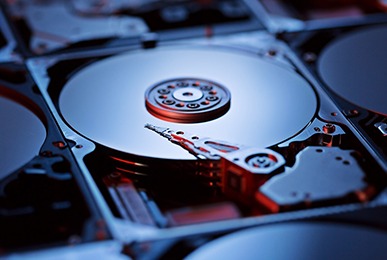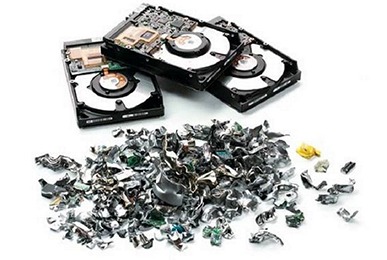
Have you ever wondered what happens to your data when you delete it? Does it really disappear forever? Let’s dive into the world of data sanitization and explore the key differences between data deletion and data destruction.
Table of Contents
What is Data Sanitization?
Data sanitization is the process of permanently and securely removing data from storage devices, ensuring that it cannot be recovered. It’s a crucial practice for protecting sensitive information, whether it’s personal data, business secrets, or any other confidential material. There are different methods of data sanitization, including data deletion and data destruction, each with its own procedures and outcomes.
Data Deletion: A Common Misunderstanding
When you delete a file on your computer, what happens to it? Many people think that once a file is deleted, it’s gone forever. However, that’s not entirely true.
What Actually Happens When You Delete a File?
When you delete a file, your operating system removes the reference to that file in the file system, making it inaccessible through normal means. However, the actual data remains on the disk until it is overwritten by new data. This means that with the right tools, deleted files can often be recovered.
Why is Data Deletion Not Enough?
Simply deleting data does not provide the level of security needed to protect sensitive information. For businesses, this can be a major risk. Hackers and data thieves can use recovery software to retrieve deleted data, potentially leading to data breaches and identity theft. This is why data deletion alone is not sufficient for secure data sanitization.
Data Destruction: Going Beyond Deletion
Data destruction is a more thorough and secure method of data sanitization. It involves completely destroying the data so that it cannot be recovered, even with advanced recovery techniques.
Methods of Data Destruction
- Physical Destruction: This involves physically destroying the storage device, such as shredding, crushing, or incinerating hard drives and other media. This method ensures that the data cannot be recovered because the device itself is rendered unusable.
- Data Wiping: This method uses software to overwrite the data on the storage device multiple times, making it irretrievable. Data wiping tools follow specific standards, such as the DoD 5220.22-M method, which overwrites data three times to ensure it’s completely erased.
- Degaussing: This process involves using a high-powered magnet to disrupt the magnetic fields on a storage device, effectively erasing the data. Degaussing is effective for magnetic storage media like hard drives and tapes.
Why Choose Data Destruction?
Data destruction offers a higher level of security compared to data deletion. It ensures that sensitive information cannot be recovered, providing peace of mind for individuals and organizations that need to protect confidential data. This is particularly important for businesses handling personal customer information, financial data, or proprietary business information.
When to Use Data Deletion vs. Data Destruction
Understanding when to use data deletion versus data destruction is crucial for effective data management and security.
Data Deletion Use Cases
- Temporary Files: For files that are not sensitive and do not need to be permanently erased, data deletion is usually sufficient.
- Personal Use: For personal data that does not contain sensitive information, deleting files can be an acceptable practice.
Data Destruction Use Cases
- Sensitive Information: For any data that contains personal, financial, or confidential business information, data destruction is necessary to ensure security.
- End-of-Life Devices: When disposing of old computers, smartphones, or storage devices, it’s essential to use data destruction methods to prevent data breaches.
- Compliance Requirements: Many industries have regulations requiring the secure destruction of certain types of data. For example, healthcare organizations must comply with HIPAA regulations, which mandate the secure disposal of patient information.
Best Practices for Data Sanitization
To ensure that data is securely removed, it’s important to follow best practices for data sanitization. Here are some tips:
- Assess the Sensitivity of the Data: Determine the level of sensitivity of the data you need to remove. Highly sensitive data requires more secure methods of sanitization.
- Choose the Appropriate Method: Based on the sensitivity of the data, choose the appropriate method of data sanitization. For highly sensitive data, data destruction methods such as physical destruction or data wiping are recommended.
- Follow Industry Standards: Use data sanitization methods that comply with industry standards and regulations. This ensures that you are following best practices and meeting legal requirements.
- Document the Process: Keep records of the data sanitization process, including the methods used and the date of sanitization. This can be important for compliance and auditing purposes.
- Use Professional Services: For businesses and organizations, it can be beneficial to use professional data destruction services. These services have the expertise and equipment to destroy data and provide certification of destruction securely.
The Role of Data Sanitization in Cybersecurity
Data sanitization plays a vital role in cybersecurity. By ensuring that sensitive data is securely removed, organizations can prevent data breaches and protect their reputation. Here are some key benefits of effective data sanitization:
- Protecting Sensitive Information: Securely removing sensitive data helps prevent unauthorized access and data breaches. This is essential for protecting personal information, financial data, and proprietary business information.
- Compliance with Regulations: Many industries have regulations requiring the secure disposal of data. By following data sanitization best practices, organizations can comply with these regulations and avoid legal penalties.
- Preventing Identity Theft: Data breaches can lead to identity theft, where criminals use stolen information to commit fraud. Secure data sanitization helps prevent this by ensuring that sensitive information is completely erased.
- Maintaining Customer Trust: Customers trust businesses to protect their personal information. By securely sanitizing data, organizations can maintain customer trust and protect their reputation.
Conclusion
Understanding the difference between data deletion and data destruction is crucial for effective data management and security. While data deletion may seem like a quick and easy way to remove data, it does not provide the level of security needed for sensitive information. Data destruction, on the other hand, offers a more secure solution by ensuring that data cannot be recovered.
By following best practices for data sanitization, individuals and organizations can protect sensitive information, comply with regulations, and prevent data breaches. Whether it’s through physical destruction, data wiping, or degaussing, choosing the right method of data destruction is essential for secure data sanitization.
So next time you think about deleting a file, remember the importance of data destruction and take the necessary steps to ensure your data is securely removed. Your data security is worth the effort.





